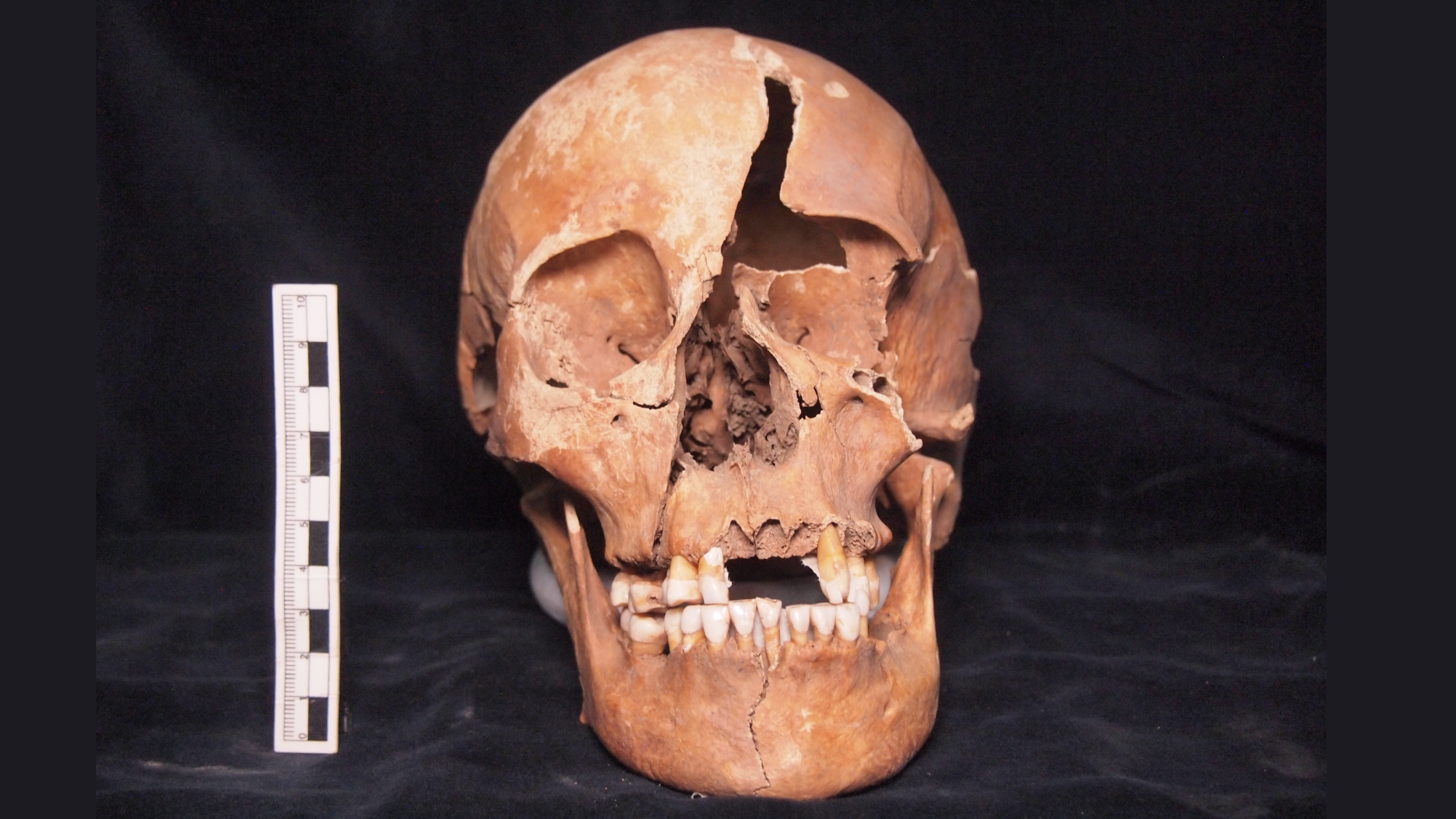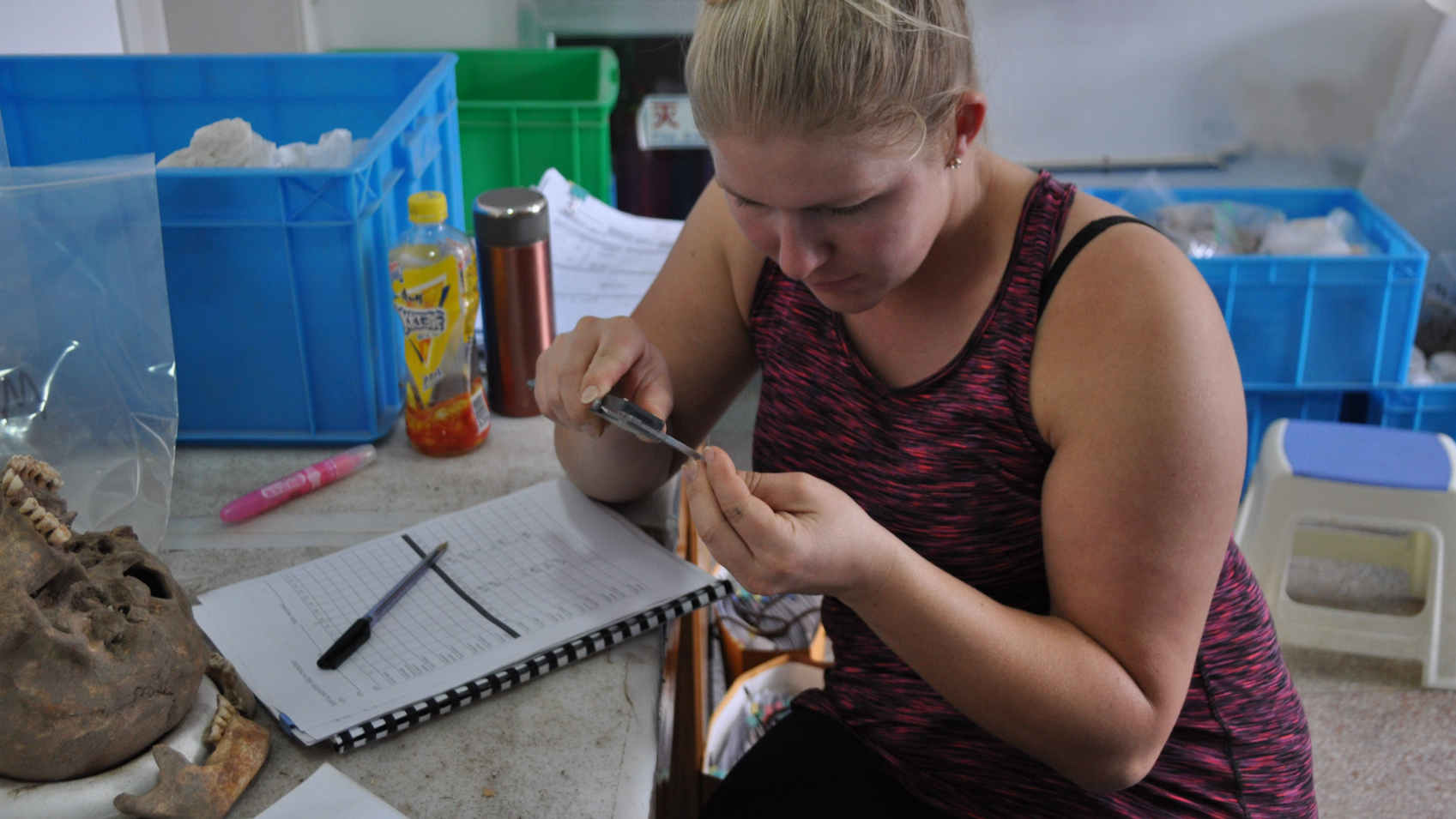Dozens of skeletons buried in a 3,700-year-old cemetery in China show evidence of extreme trauma, suggesting that assailants felt a need to “overkill” their victims in bloodthirsty raids during the Bronze Age.
“One individual had 18 separate stab wounds to the cranial vault, which is obviously more than is needed to incapacitate or kill a person,” Elizabeth Berger, a bioarchaeologist at the University of California, Riverside, said in a presentation April 24 at the Society for American Archaeology annual meeting in Denver, Colorado.
Berger and colleagues presented new results — which are not yet published in a peer-reviewed journal — from their analysis of a cemetery called Mogou in Gansu Province, China. Part of the Bronze Age Qijia culture, Mogou was used for burials between 1750 and 1100 B.C. The large cemetery contains more than 1,600 graves with more than 5,000 people buried in them. These people lived a mostly agricultural lifestyle and exchanged metal and ceramic goods with other groups in the region.
In 2019, the researchers published a preliminary study of some of the Mogou skeletons, discovering a shockingly high frequency of trauma on adult skulls. Their new work, which focused on 348 skulls from adults and adolescents, also revealed a lot of trauma: 11.1% of the heads had evidence of unhealed injuries, such as stab wounds, blunt trauma and projectile damage.
What surprised the researchers, though, was their discovery that the majority of the adults with trauma had suffered multiple injuries rather than just one fatal blow; 55% of the adults had three or more cranial wounds.
“None of the other sites in the region has violence like this — it is unique,” Berger told Live Science.
Related: 2,200-year-old grave in China contains ‘Red Princess of the Silk Road’ whose teeth were painted with a toxic substance
Males were more likely than females to have multiple-injuries on their crania, Berger said in the presentation, and several males had defensive injuries such as violent fractures of their hand bones. The researchers also found injuries to different parts of the skulls — such as the front and rear — that suggest the possibility of multiple attackers.
The results of intense violent interactions can be seen on numerous male skulls, including one with a large slash through his face showing sharp trauma, and one who had chop marks on his lower leg in addition to 18 separate stab wounds on his skull.
Why “overkill”?
The extreme nature of the violence inflicted on the skeletons, Berger said in the talk, suggests the idea of “overkill,” a term used by forensic specialists to describe homicides in which a murderer does significantly more damage than necessary to kill their victim.
“I think it is a useful term,” Berger said in the talk, “because there seemed to have been an emotional or psychological or performative aspect to the violence.”
The researchers are still unsure of the reason for the Bronze Age violence. Warfare and raiding are two potential interpretations, particularly because the Qijia culture was situated at a kind of ancient crossroads between different groups of people.

But Berger believes the explanation might lie in an ancient blood feud, in which there was both a lethal intent but also a need “to destroy the social identity of the people who were being killed and cause psychological damage to the people who were not killed,” she said in the talk.
“Violence is a cultural component of society,” co-author Jenna Dittmar, a biological anthropologist at Edward Via College of Osteopathic Medicine in Louisiana, told Live Science. “It’s important that we go back and revisit previously published collections of skeletons,” particularly to look for evidence of trauma, she said.
Additional research is ongoing at Mogou, the researchers said, including the study of animal bones, parasites and ancient DNA, with a goal of understanding what life was like during a key transition to a drier and cooler climate.
Terracotta Army quiz: What do you know about the ‘warriors’ in the 2,200-year-old tomb of China’s 1st emperor?
